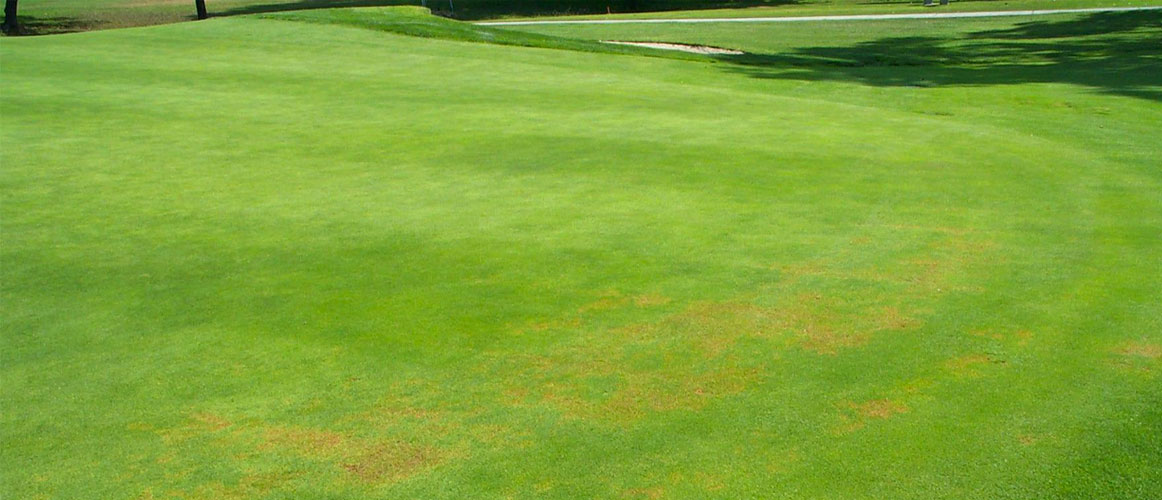This is Part 2 of a three-part series on summer diseases of turfgrass.
Anthracnose is a fungal disease that mainly affects Poa annua putting greens but has also been identified on creeping bentgrass greens and other cool season grasses.
Symptoms appear as irregular shaped rust-orange-colored patches. It is associated with high-temperature stress (85 F to 95 F), drought, and salinity but can sometimes cause infection at cool temperatures. Anthracnose is mostly a foliar disease, but spores sometimes infect crowns and leaf sheaths, which can be especially difficult to control.
Best Management Practices for Anthracnose Control
Research at Rutgers University has identified several cultural management practices to prevent and control anthracnose:
- Avoid excessively low mowing height during hot weather. Roll greens instead of mowing to maintain green speed.
- Maintain adequate nitrogen and potassium fertility.
- Continue to make light and frequent applications of sand topdressing, which helps to protect the crown and reduce anthracnose infection.
- Maintain consistent moisture and avoid wet/dry cycles. Volumetric water content (moisture percentage) in the soil should be maintained at 18%.
- Chemical control: many turf managers prefer to make preventive fungicide applications prior to the onset of hot temperatures. It is critical to rotate fungicides with different modes of action to avoid disease resistance. There have been several instances of resistance to stobilurin fungicides and thiophante-methyl. Fungicides registered for anthracnose control include:
- chlorothalonil (Daconil)
- phoshponates (Chipco Signature, Aliette, Alude)
- fludioxinil (Medallion)
- iprodione (Chipco GT)
- penthiopyrad (Velista)
- sterol inhibitor fungicides: Maxtima, Tourney, Banner Maxx, Mirage, Torque, Trinity, Triton
As with all pest control materials, it is recommended to consult the fungicide label for state registration and to follow all laws for application procedures.
More information and details on anthracnose management from the Rutgers study are available on the university's website.
Contact me if you have any questions about anthracnose disease or other turf-related topics. Don't forget to review Part 1 and Part 3 of this series as well:
• Detect Summer Turfgrass Diseases – Part 1 Fairy Ring Disease




